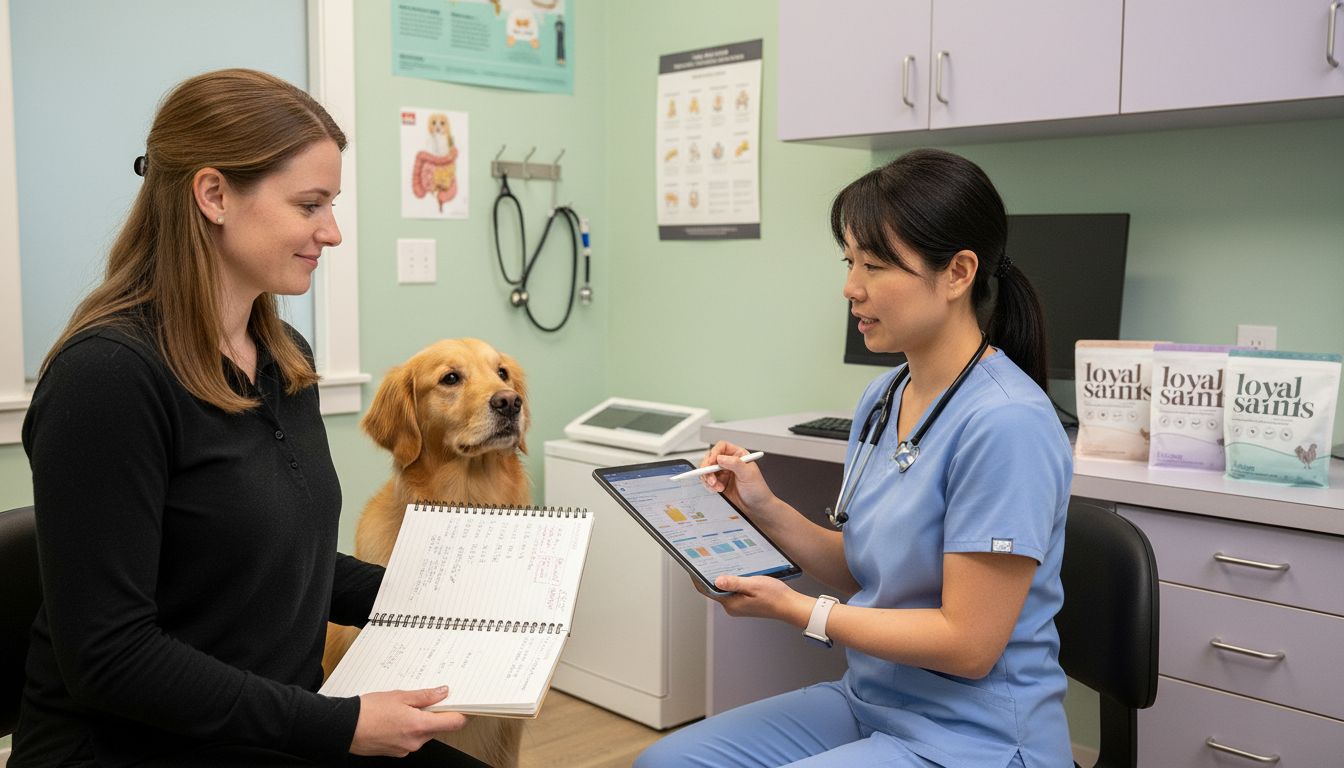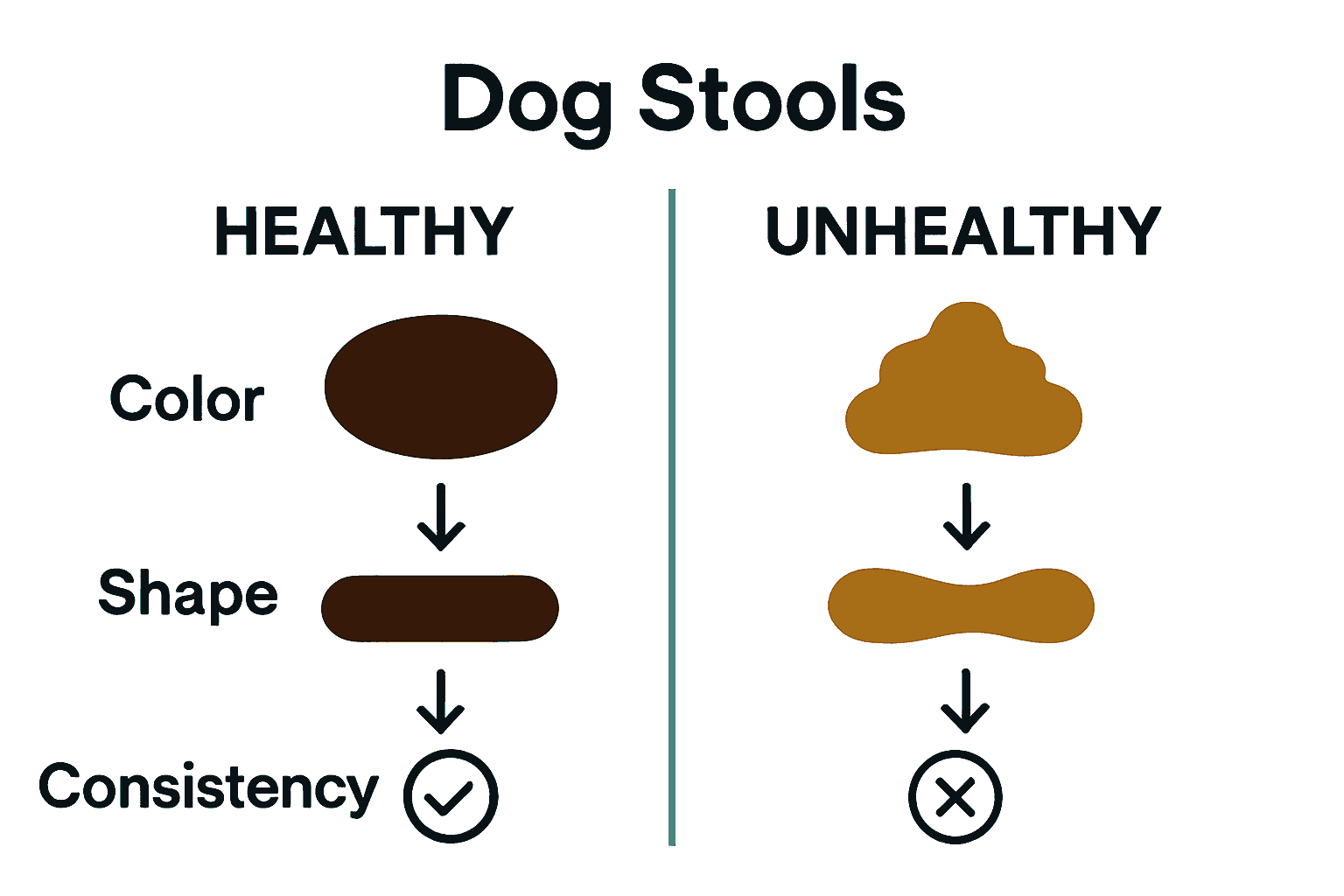How to Improve Dog Digestive Health Naturally at Home
- Nick Willkom
- 2 hours ago
- 7 min read

More than 60 percent of american dog owners report ongoing digestive issues in their pets. When a beloved companion struggles with upset stomach, diarrhea, or sudden changes in appetite, the impact stretches far beyond simple discomfort. Early action and clear dietary choices can prevent larger health concerns, increase your dog’s happiness, and save you from repeated trips to the veterinarian. Discover practical steps you can take to support your dog’s digestive system with confidence.
Table of Contents
Quick Summary
Key Point | Explanation |
1. Monitor Dietary Intake | Track your dog’s food and stool patterns to identify any digestive issues early on. This proactive monitoring is crucial for digestive health. |
2. Transition to Quality Ingredients | Use natural, human-grade ingredients in your dog’s food for better nutrition. Gradually mix these with existing food to avoid digestive upset. |
3. Observe Stool Quality | Regularly check your dog’s stool for consistency and color, as these are indicators of digestive health and can signal underlying problems. |
4. Gradually Introduce New Foods | When switching to freeze-dried food, do it over 7-10 days to help your dog adjust and reduce the risk of gastrointestinal issues. |
5. Consult a Veterinarian | Regular veterinary consultations are essential for tailoring a nutrition plan to your dog’s specific needs and monitoring health improvements. |
Step 1: Assess Current Diet and Identify Digestive Issues
Understanding your dog’s digestive health starts with carefully analyzing their current diet and recognizing potential warning signs. According to AKC, key indicators of digestive problems include excessive gas, diarrhea, constipation, vomiting, and unexpected changes in appetite.
To effectively assess your dog’s digestive wellness, begin by tracking their daily food intake and observing their stool quality. Look for consistent patterns like loose stools, straining during bowel movements, or sudden shifts in eating behavior. PubMed research highlights that gastrointestinal symptoms are among the most common reasons pet owners seek veterinary care, making early detection critical.
Proactive monitoring involves maintaining a detailed log of your dog’s diet, including brand, portion sizes, and frequency of meals. Note any reactions or changes after eating, such as bloating, increased gas, or reluctance to eat. If you notice persistent digestive irregularities, schedule a veterinary consultation to rule out potential underlying health issues and receive professional guidance on dietary adjustments.

As you move forward, understanding these initial signs will help you make informed decisions about your dog’s nutrition and overall digestive health. Check out our detailed guide on dog stool and digestive health for more comprehensive insights into maintaining your furry friend’s wellness.
Step 2: Switch to Natural, Human-Grade Ingredients
Transitioning your dog to natural human-grade ingredients can significantly improve their digestive health and overall nutrition. According to California Department of Public Health, pet food manufacturers must follow specific guidelines when labeling ingredients as ‘human grade,’ ensuring higher quality standards for pet nutrition.
Start by carefully examining ingredient lists on dog food packaging. Look for whole protein sources like chicken, beef, or fish listed as the first ingredients. Avoid products with mysterious meat byproducts, artificial preservatives, or excessive fillers. Learn more about human-grade ingredient standards in our comprehensive guide, which breaks down exactly what qualifies as truly human-grade nutrition.
When introducing new ingredients, do so gradually to prevent digestive upset. Mix small amounts of high-quality human-grade foods with your dog’s current diet, slowly increasing the proportion over 7-10 days. Prioritize lean proteins, fresh vegetables, and minimally processed ingredients that provide essential nutrients without unnecessary additives. Watch your dog’s reaction carefully, noting any improvements in energy levels, coat quality, and stool consistency as indicators of successful nutritional transition.
Step 3: Introduce Freeze-Dried Dog Food Gradually
Transitioning your dog to freeze-dried food requires a careful and methodical approach to support their digestive health. According to AKC, introducing new foods should be a gradual process spanning 7-10 days to prevent potential digestive upset and allow your dog’s system to adapt smoothly.
Begin by mixing a small percentage of freeze-dried food with your dog’s current diet typically starting at 25% new food and 75% existing diet. Learn more about transitioning to freeze-dried food with our comprehensive guide, which provides detailed insights into making this nutritional shift. Incrementally increase the proportion of freeze-dried food over the next week, monitoring your dog’s response closely. Watch for signs of digestive comfort such as consistent stool quality, energy levels, and overall appetite.
As AARP emphasizes, sudden dietary changes can lead to gastrointestinal issues. Pay attention to your dog’s individual reactions and be prepared to slow down the transition if you notice any adverse responses. By introducing freeze-dried food gradually, you’re giving your dog’s digestive system time to adjust while providing a nutrient-dense, minimally processed meal option that supports their overall health and wellness.
Step 4: Monitor Stool Quality and Digestive Response
Tracking your dog’s digestive health requires careful observation and understanding of their body’s responses to dietary changes. According to AKC, monitoring stool quality is crucial in assessing how well your dog’s digestive system is adapting to new nutritional approaches, with changes in consistency, color, and frequency serving as key indicators of overall gastrointestinal wellness.
Establish a consistent daily monitoring routine by examining your dog’s stool during walks or bathroom breaks. Look for signs of healthy digestion including firm, chocolate brown stools that maintain a consistent shape. Learn more about understanding digestive health indicators in our comprehensive guide, which provides detailed insights into interpreting your dog’s digestive signals. Red flags to watch for include loose stools, mucus, blood, extreme changes in color, or significant shifts in frequency that might indicate underlying digestive challenges.

As PubMed research emphasizes, systematic observation of digestive responses is essential for identifying potential health issues early. Keep a simple log tracking stool quality, noting any unusual characteristics and correlating them with recent dietary changes or environmental factors. By maintaining this proactive approach, you can quickly identify and address potential digestive concerns before they develop into more serious health problems.
Step 5: Consult Your Veterinarian for Ongoing Adjustment
Navigating your dog’s digestive health journey requires professional guidance and expert insights. According to AKC, consulting a veterinarian is crucial when making dietary changes, especially for dogs with sensitive digestive systems or unique nutritional needs.
Schedule a comprehensive consultation to discuss your dog’s current diet, health status, and digestive challenges. Your veterinarian can help develop a personalized nutrition plan that accounts for your dog’s age, breed, weight, and specific health conditions. Learn more about managing sensitive dog stomachs with our detailed guide, which provides insights into working effectively with veterinary professionals.
As PubMed research emphasizes, ongoing veterinary consultation is essential for monitoring dietary interventions and ensuring your dog receives balanced nutrition. Be prepared to share detailed observations about your dog’s digestive response, including stool quality, energy levels, and any noticeable changes. Your veterinarian can help fine tune your approach, recommend additional diagnostic tests if needed, and provide expert advice to support your dog’s long term digestive health and overall wellness.
Boost Your Dog’s Digestive Health with Natural, Human-Grade Nutrition
If you are dealing with digestive upset, inconsistent stool quality, or simply want to support your dog’s vitality and wellbeing naturally, choosing the right food is key. This article shows how gradual diet changes and careful monitoring make all the difference when improving sensitive stomachs. At Loyal Saints Pets, we understand the challenges pet owners face trying to find freeze-dried dog food made from premium human-grade ingredients that promote optimal digestion and overall health.

Explore our carefully crafted selection of nutrient-rich, minimally processed foods designed to support healthy digestion, muscle strength, and a happier, more energetic life for your dog today. Don’t wait until digestive issues worsen. Visit Loyal Saints Pets now and start your dog’s transition with confidence using our detailed guides like How to Transition Your Dog to Raw Freeze-Dried Food and insights on What is Human Grade Dog Food. Begin giving your furry family member the nutrition they deserve for a longer, healthier life.
Frequently Asked Questions
How can I assess my dog’s current digestive health?
To assess your dog’s digestive health, track their daily food intake and observe their stool quality for any irregularities, such as loose stools or changes in appetite. Maintain a detailed log of their diet and any reactions to food to identify patterns over time.
What are natural foods I can introduce to improve my dog’s digestion?
Start by transitioning your dog to natural, human-grade ingredients like lean proteins, fresh vegetables, and whole grains that provide essential nutrients without additives. Gradually replace a portion of their regular food with these ingredients over 7-10 days to minimize digestive upset.
How should I transition my dog to freeze-dried food?
Introduce freeze-dried food gradually by mixing 25% of the new food with 75% of their current diet, then increase the proportion over the next week. Monitor your dog’s response closely, watching for improvements in energy levels and stool quality, while adjusting the transition pace if necessary.
What signs indicate my dog may have digestive issues?
Watch for signs such as excessive gas, diarrhea, vomiting, or changes in appetite, which may indicate digestive issues. If these symptoms persist, consult your veterinarian for a professional assessment to determine the underlying cause.
How can I monitor my dog’s stool quality effectively?
Regularly observe your dog’s stools during walks to assess their consistency, color, and frequency. Look for firm, chocolate-brown stools and keep a simple log to track any unusual characteristics or changes in response to dietary adjustments.
When should I consult my veterinarian about my dog’s diet?
Consult your veterinarian if you notice persistent digestive issues, or before making significant dietary changes, especially if your dog has unique nutritional needs. Schedule regular check-ups to ensure your dog maintains balanced nutrition and optimal digestive health.
Recommended
.png)



Comments